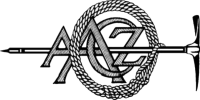- Home
- Nepal
- Adventure Activities
- Peak Climbing
- Mountain Expedition
- Local Tours
- Sirubari Village Homestay
- Ghale Gaun
- Kalinchowk Tour
- Halesi Mahadev - Maratika Cave package
- Chitwan Jungle Safari
- Day tour in Kirtipur
- Day tour in Kathmandu City
- Spiritual Tour to Muktinath
- Chitlang and Kulekhani
- Bardiya National Park
- Jeep Tour to Rara Lake
- Gosaikunda Lake
- Manakamana day Tour with cable-car ride
- 4WD Jeep Tour to Upper Mustang
- Family Holidays
- Heli & Mountain Flights
- Trekking Routes
- Kailash Mansarovar
- Bhutan
- Tibet
- Multi Country
- Domestic Flights
- Contact
- Home
- Nepal
- Adventure Activities
- Peak Climbing
- Mountain Expedition
- Local Tours
- Sirubari Village Homestay
- Ghale Gaun
- Kalinchowk Tour
- Halesi Mahadev - Maratika Cave package
- Chitwan Jungle Safari
- Day tour in Kirtipur
- Day tour in Kathmandu City
- Spiritual Tour to Muktinath
- Chitlang and Kulekhani
- Bardiya National Park
- Jeep Tour to Rara Lake
- Gosaikunda Lake
- Manakamana day Tour with cable-car ride
- 4WD Jeep Tour to Upper Mustang
- Family Holidays
- Heli & Mountain Flights
- Trekking Routes
- Kailash Mansarovar
- Bhutan
- Tibet
- Multi Country
- Domestic Flights
- Contact
Annapurna Circuit with Nar-Phu Valley
An exciting Trekking experience
Nar Phu Valley Trek combined Annapurna Circuit is one of the most adventurous treks in the remotest parts of the Himalayas which features beautiful panorama along with diverse culture. While Nar Phu Valley is one of the least visited trekking routes, Annapurna Circuit is one of the popular trekking trails in Nepal. So, Nar Phu Valley Trek combined Annapurna Circuit allows you to experience both the isolated and the crowded sides of the Nepal Himalayas. The Nar Phu Trek combines high peaks and passes, glaciers, remote villages, narrow canyons, lovely forests, amazing rock formations, yaks, gompas and unique Himalayan cultures. Trails are rugged and cut high into the side of the cliff. Phu is a beautiful medieval village where you can witness the real lifestyles of the Bhote communities and enjoy the fabulous and typical landscape of the valley. This trekking trail is best for those who wish to trek in a less crowded part of the Annapurna region.
Destination: Annapurna, Nepal
Trip Routes: Kathmandu - Beshisahar - Bahundada - Chamje - Dharapani - Koto - Dharmasala - Kayang - Phu Village - Junam - Nar -Ngwal; Kang La Pass - Manang - Yak Kharka - Thorong Phedi - Muktinath; Thorong La Pass - Kagbeni - Marpha - Ghasa - Tatopani - Ghorepani - Hille; Poonhill - Pokhara - Kathmandu
Activities: Trekking and Sightseeing
Season: February to May and September to December
2 - 10
Detailed Itinerary
- Day 1 Drive from Kathmandu to Beshishahar (760m)
We will drive along the Kathmandu-Pokhara Highway to Dumre and then follow the narrow and paved road by the Marsyangdi River to Besi Sahar. - Day 2 Trek from Beshishahar to Bahundanda (1310m)
The first part of the trail passes on a flat level along the bank of the Marshyangdi river. We can enjoy the sceneries and local culture of the Gurung community. After lunch at Ngadi, the trail goes steeply upwards to Bahundanda which takes about two hours. At this point, we can see the area surrounded by eye-catching scenarios with snow-capped mountains. - Day 3 Trek from Bahundanda to Chamje (1430m)
A steep trail descends for early half an hour and then follows a flat path through rice terraces. small ups and downs to Chamje through the forests. - Day 4 Trek from Chamje (1410m) to Dharapani (1860m)
The first part of the trail descends to the river and after crossing a suspension bridge, We will begin a climb to Sattale (1550m.) We descend to a grassy riverbank, which leads to Tal with its hotels and teahouses. - Day 5 Trek from Dharapani to Koto which takes about five hours.
We will have a good mountain views of Annapurna II and the Manaslu range. The beautiful views of forests on the way add another dimension to your trek. - Day 6 Trek from Koto to Dharmasala and it takes about six hours.
We will pass the checkpoint, cross the river leading to the Nar Phu valley and hike up through Phu Khola. The route takes you through some beautiful woods past several small caves, and a pilgrims’ Dharmasala. - Day 7 Trek from Dharmasala to Kayang which takes about six and a half hours.
We pass by the scenic Kharka of Meta where we are likely to share the trail with a few yaks! This morning is one of the loveliest walks in the Himalayas. - Day 8 Trek from Kayang to Phu village.
We start to see some of the unique, colorful Chortens for which Nar and Phu are famous. This ancient gate provides us with the first view of the three villages of Phu. - Day 9 Excursion around Phu valley.
We might walk up the valley to the summer grazing settlement or Kharka at Ngoru, a three-hour walk past the gompa. Phu itself is an incredibly interesting village and we can observe the villagers spinning their yak and sheep wool and chat. - Day 10 Trek from Phu valley to Junam.
We get back through Phu gate, descend to the river and retrace our steps back to Junam Kharka which is a lovely spot for camping. - Day 11 Trek from Junam to Nar.
We finally reach the Nar gates at the top of the hill, and pass by yet another line of wonderfully painted, bamboo topped Chortens and a large tiered Chorten before turning the corner and being rewarded with sublime views of Nar. - Day 12 Explore Nar village.
we will explore Nar village and interact with the people about their lifestyle, culture, and traditions. Nar villagers may be printing prayer flags, doing some carpentry, collecting wood from the forest. - Day 13 Trek from Nar village to Ngwal after crossing Kang La pass.
The Kang La, is a spectacular pass looking over Annapurna II, Gangapurna, Tilicho peak, the peaks surrounding Tilicho and the airport at Hongde. - Day 14 Trek from Ngwal to Manang which takes about three hours.
This day we will walk along the leveled path on the bank of the Marshyangdi river to reach Manang. On the way, we will pass pine forests, villages such as Braga and farming terraces. We can enjoy the views of the Annapurna range, Tilicho Mountain and beautiful landscapes. - Day 15 Trek from Manang to Yak Kharka (4350m.) and it takes about three and a half hours.
Now the trail ascends gently to Yak Kharka passing through the Gunsang (3960m.) village. En route, we can see panoramic views all day. - Day 16 Trek from Yak Kharka to Thorong Phedi (4420m.) which takes about 3 and half hours.
Leaving Yak Kharka, we will climb gradually to a ridge before descending to the headwaters of the Marsyangdi and crossing via a covered wooden bridge. After a short ascent up the mountain path on the right bank, we will follow a narrow trail across an unstable spree slope and then descend to Thorong Phedi. - Day 17 Trek from Thorong Phedi to Muktinath (3850m.) via Thorong La (5416m.) Pass - 7 hours.
We will start early today for our crossing of Thorong La [5416m]. The descent to Muktinath is a knee pounding 1600m but it’s compensated for with excellent views of Dhaulagiri. Eventually, the moraines give way to grassy slopes before a pleasant walk along the Jhong Khola Valley to Muktinath. - Day 18 Trek from Muktinath to Kagbeni (2895 m.) and it takes about three and a half hours.
We will begin the trek descent down the dramatic Kali Gandaki Gorge, initially through arid country in the same geographical and climatic zone as Tibet. - Day 19 Trek from Kagbeni to Marpha (2650m.) and it takes about five and a half hours.
We now begin along a flat path along the bank of the dramatic Kali Gandaki Gorge, initially through arid country in the same geographical and climatic zone as Tibet up to Marpha. - Day 20 Trek from Marpha to Ghasa (2013m.) which takes about six hours.
Here we are quite amazed at the panoramic views of Mount Nilgiri North (7061m.), Nilgiri Central (6940m.), Nilgiri South (6839m.), Annapurna I (8091m.), Dhaulagiri I (8167m.) and Tukuche peak (6920m.). - Day 21 Trek from Ghasa to Tatopani (1189 m.) which takes about five hours.
The trail descends steeply to Rukse Chhahara which is amazing to see. Here is situated the deepest gorge of the world between the two mountains Annapurna I (8091m.) and Dhaulagiri I (8167m.) which face each other near Rukse Waterfall. Now the trail ascends slightly to Tatopani. - Day 22 A rest day at Tatopani to enjoy the natural hot spring bath.
After several days of trekking, it is a great idea to take a bath at hot spring and relax. - Day 23 Trek from Tatopani to Ghorepani (2853 m.) for about seven hours.
While trekking we cross through the Kali Gandaki river with panoramic views of Dhaulagiri I, II, III, IV, Tukuche peak, Dhampus peak, Nilgiri ranges, Annapurna I, Bahra Sikhar, Annapurna South, Himchuli, Fishtail, and Mardi Himal. - Day 24 Trek from Ghorepani to Poon Hill (3180m.) to Hille (1475m.) which takes about five hours.
Early morning trip to Poon Hill (3232m.) to enjoy the sunrise views over the majestic Himalayan mountains. We can enjoy views of Annapurna South, Machhapuchhre and Hiunchuli. - Day 25 Trek from Hille to Nayapul, drive to Pokhara.
This day’s trek gradually descends following Bhurung Khola to Birethanti before we cross the Modi Khola over the suspension bridge. We are amazed to pass small villages, see the magnificent waterfalls and walk through the sparse forests. - Day 26 Drive from Pokhara
While driving from Pokhara to Kathmandu, we can enjoy mountain views, green sceneries, rice terrace fields, vegetable fields, etc.
This trip can be redesigned or redeveloped as per your taste, For more information please e-mail us at This email address is being protected from spambots. You need JavaScript enabled to view it.
Cost and dates
We do small group trek or private trip as your request.
For quick information / contact us at whatsapp/viber + 977 9841815039
Or Drop us inquiry at This email address is being protected from spambots. You need JavaScript enabled to view it.
Tips & Resources
This trek can be redesigned or redeveloped as per your taste, For more information please e-mail us at This email address is being protected from spambots. You need JavaScript enabled to view it..
Frequently Asked Questions
It is always a good idea to involve yourself in doing physical exercises before trekking. Not that you have to be all athletic and muscular to trek. An average level of physical fitness will make the journey less stressful.
Availability of drinking water is not the problem. The problem is the cost of it at higher altitude. As you gain height, the price of water rises up to 2-3$ per liter.An alternative way of getting drinking water is by having your water bottles filled in tea houses. Tea houses will provide you boiled water for about 1$ per liter. They are completely safe for drinking.
Food is not of any concern while trekking. You will get all kinds of cuisines. For breakfast, tea houses will provide you with eggs cooked in your preferred style along with pan cakes, bread butter, roti, and so on.Various other dishes like pizza, pasta, momo, chowmein and many more are also available. The most preferred dish is Dal Bhaat. It is a typical Nepali meal. Rice is served with vegetable curry, lentils, tomato chutney and meat curry.
Trekking is an extreme sport and does come with a lot of risks. Some unavoidable risks are avalanche, heavy rainfall, earthquake, landslide and other such natural calamities.You might fall and injure yourself or catch some viral flue. The deadliest risk of trekking is AMS or Acute Mountain Sickness. This sickness occurs when a great altitude is gained and the body fails to adjust to the changing pressures associated with it. Anyone can fall a victim of the sickness and if not treated in time, it can be fatal.
There is no such hard and fast rule that you must have one. But it is highly advisable to travel with them. Some of the treks cannot be trekked without a guide most of them are the restricted ones.
Showers are available at the teahouses. They will usually be shared bathrooms in most teahouses, especially the higher up you go. You will have to pay for a hot water shower per person.
Visit us
-
JP Marga, Thamel, Kathmandu, Nepal
-
+977-01-5365371
-
+977 98418-15039
(Whats App, Viber & Telegram)








